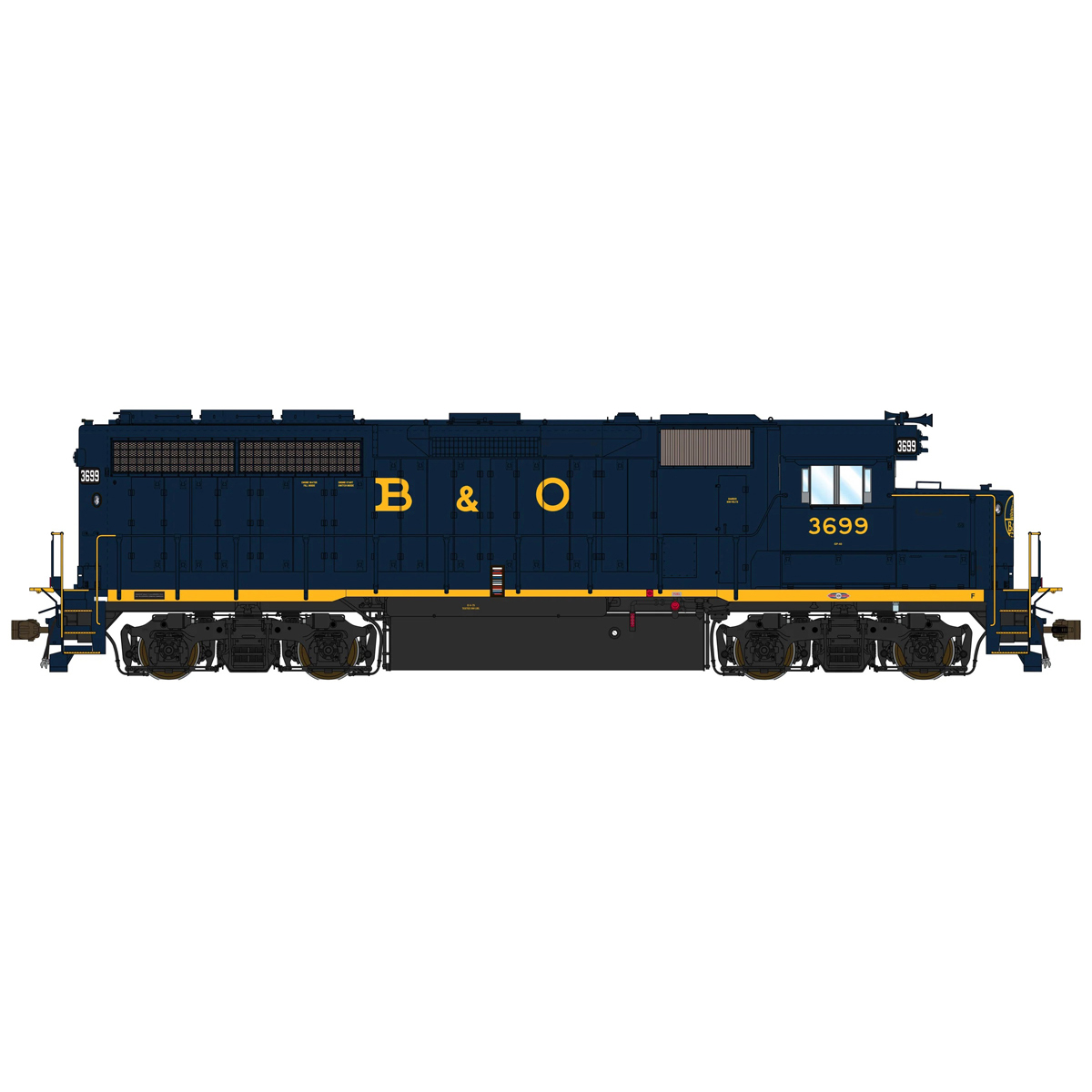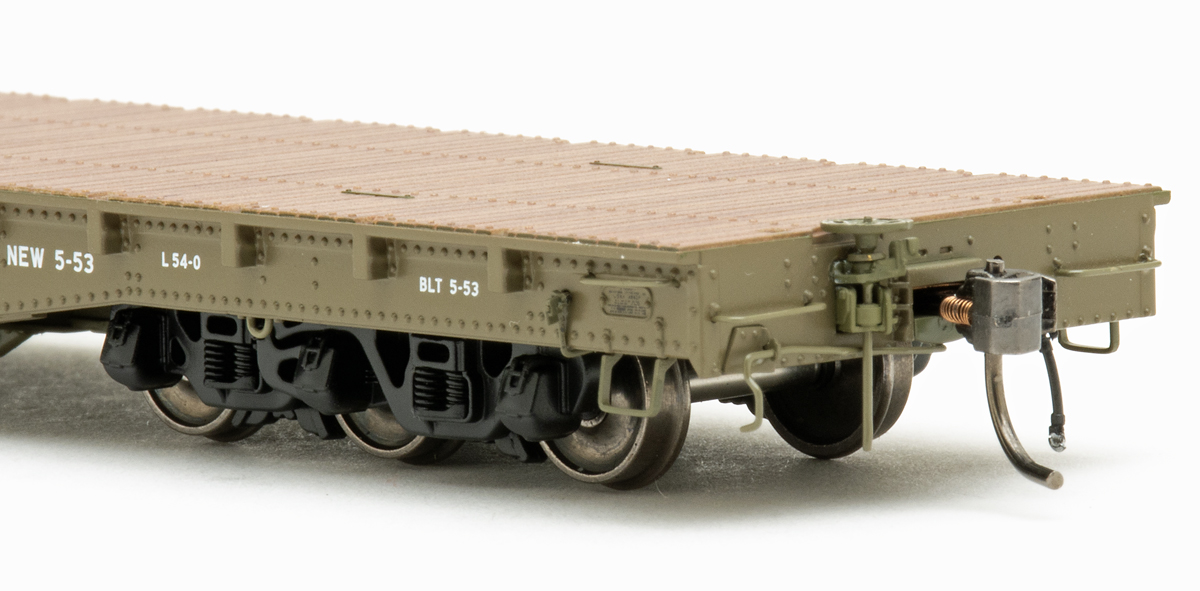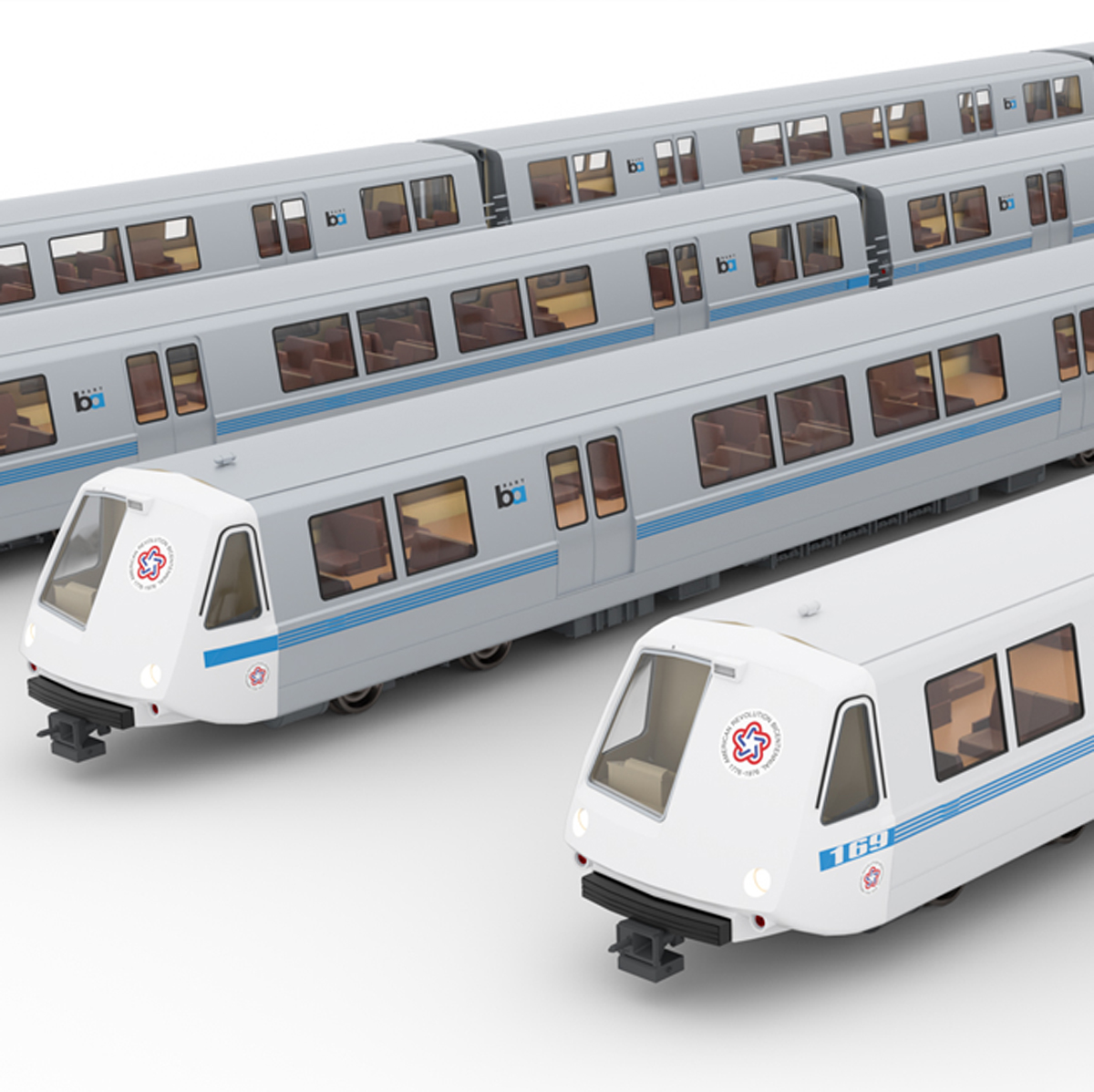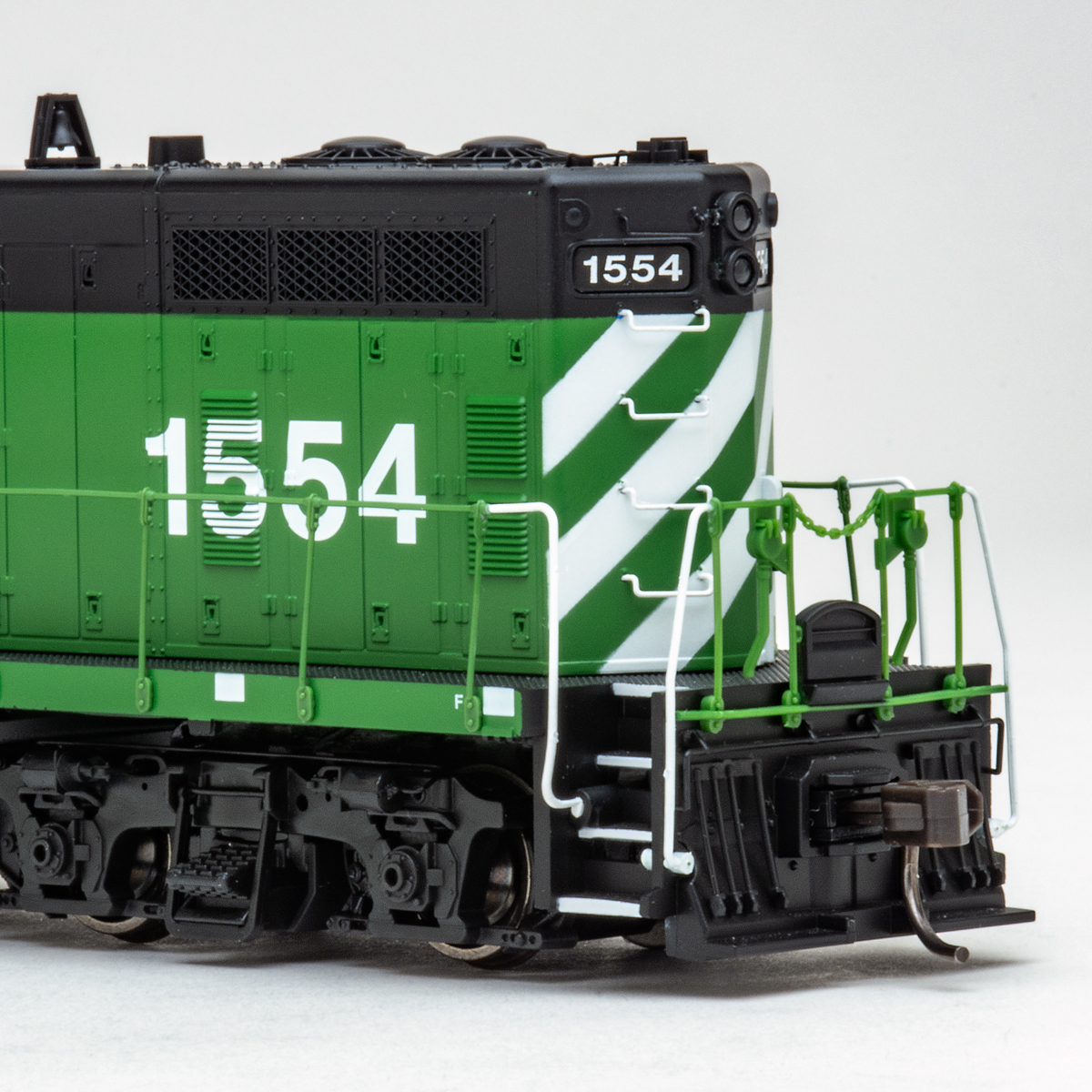by Eric White
Although he wasn’t the first editor of Model Railroader (that was Al Kalmbach), Linn Westcott was for many years the face of Model Railroader and model railroading.
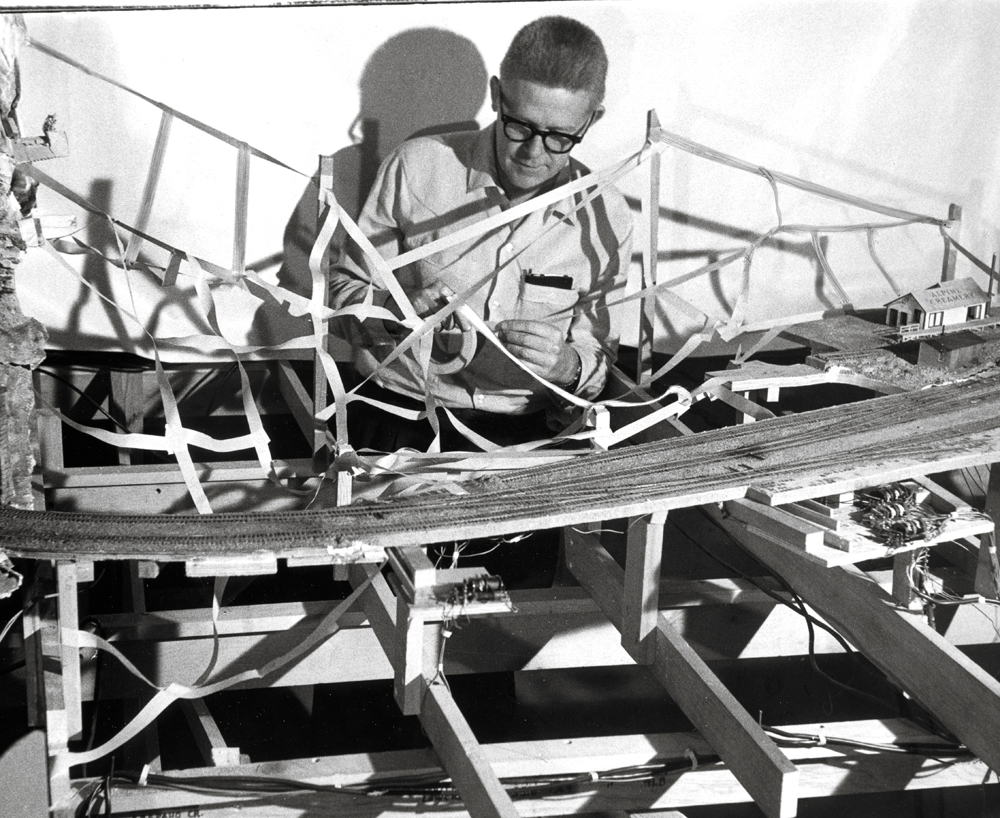
Besides guiding Model Railroader as a monthly magazine, Linn was also an innovator, always looking for a better way to do things. His most enduring contribution was the creation of L-girder benchwork, which uses two pieces of dimensional lumber to make a strong, economical foundation for a model railroad.
Working in the direct-current days, Linn developed several circuits that improved realism and control of trains be-fore the advent of Digital Command Control. A man of many talents, Linn also created scenery techniques such as zip-texturing, which allowed plaster landforms to be quickly transformed into a surface that more accurately resembled grass and scrub, and hard-shell scenery, which is the basis of much plaster scenery built today.
And, of course, he guided MR through the 1960s and most of the 1970s. Not only was he an excellent editor, but he was noted as well for his photography. He also contributed many books to the hobby.
Linn Westcott is one of the 2024 nominees in our Model Railroader Hall of Fame. Cast your vote here.
1977 interview with Russ Larson
Larson: In a conversation with any model railroader, the question Invariably comes up: “How did you get interested in model railroading?”
Westcott: Apparently my father liked trains, because I remember his taking me to see trains at times. He died when I was 5 years old, so I don’t remember much about him.
I also remember my folks giving me a wind-up train for Christmas when I was four years old. I modeled a grade crossing for it, using bran that we fed our goats. The bran was easy to handle, like sand. I shaped it around for a road to go up and over the tracks.
Our family jumped around a lot. By the time I started school, I had lived in six or seven different places in southern California. We stayed in Santa Barbara for three years, and it was there that I got the idea to build a model railroad. I told one of my teachers that I thought someday I’d build a model locomotive.
Larson: Had you seen any model railroads before got this Idea to build one yourself?
Westcott: Yes, I had seen some. The one I particularly remember was at the Pacific Electric’s station. They had a double-track line built around a relief map of southern California. This display looked beautiful to me at the time.
There was a book in our school library called The Boy Mechanic which was a reprint of Popular Mechanics articles, including some on building your own model railroad using wooden rails and so forth. That book certainly influenced me.
Larson: In all this moving around your family did, did you travel by train?
Westcott: Yes, we traveled a lot by train. The first train trip that really stands out was one we took from Santa Barbara to Boston. It was the first time I ever rode in a Pullman car. When I was in seventh grade we went to Europe and we traveled all over by rail. So I had a lot of contact with railroading at an early age.
Larson: How did you learn about Model Railroader magazine?
Westcott: Actually, I discovered The Model Craftsman magazine first. I saw my first issue of The Model Craftsman in a Chicago SearsRoebuck store sometime in 1933, and, of course, I grabbed it right away. In that issue was an ad for W.K. Walthers. Sometime during the following winter, I wrote to Walthers and got his catalog. Inside that catalog was a little ad for Model Railroader magazine, announcing a track plan design contest.
I went ahead and drew up a track plan. Al told me later that I was the only one who entered his contest. He asked me if I would contribute more to the magazine.
Larson: When did you first meet Al Kalmbach?
Westcott: In the summer of 1934, my folks wouldn’t put up money for me to travel back and forth to college (they lived in Chicago at that time), so I’d usually hitchhike. It took two days. On my way home for summer vacation in 1934 I decided to go by way of Milwaukee. I stopped at Al’s house, but no one was home, so I went down to Juneau Park. I sat on the grass there, and before long, a Chicago & North Western steam locomotive went by.
Later I called Al and, sure enough, he was home and he said to come on out. I went to his folks’ house, where he was staying at the time, and we had dinner and got acquainted. He showed me his railroad, The Great Gulch Line, which was upstairs in the attic.
Larson: Did Al ask you to work for him?
Westcott: No; I asked him. After hitchhiking out to California and back that summer, I came to Milwaukee and asked Al for a job. Al wanted me to work for him; he thought I’d be very good in this field. But he didn’t have any money to pay me. He said, “Well, stick around; we’ll see what we can do.”
He invited me to sleep on his davenport in his apartment in West Allis. I ate meals there and we worked seven days a week. That was kind of rough. I was used to having at least Saturday afternoon and Sunday off. Having to work every day of the week and not knowing when I could get off to even get a haircut was pretty grim.
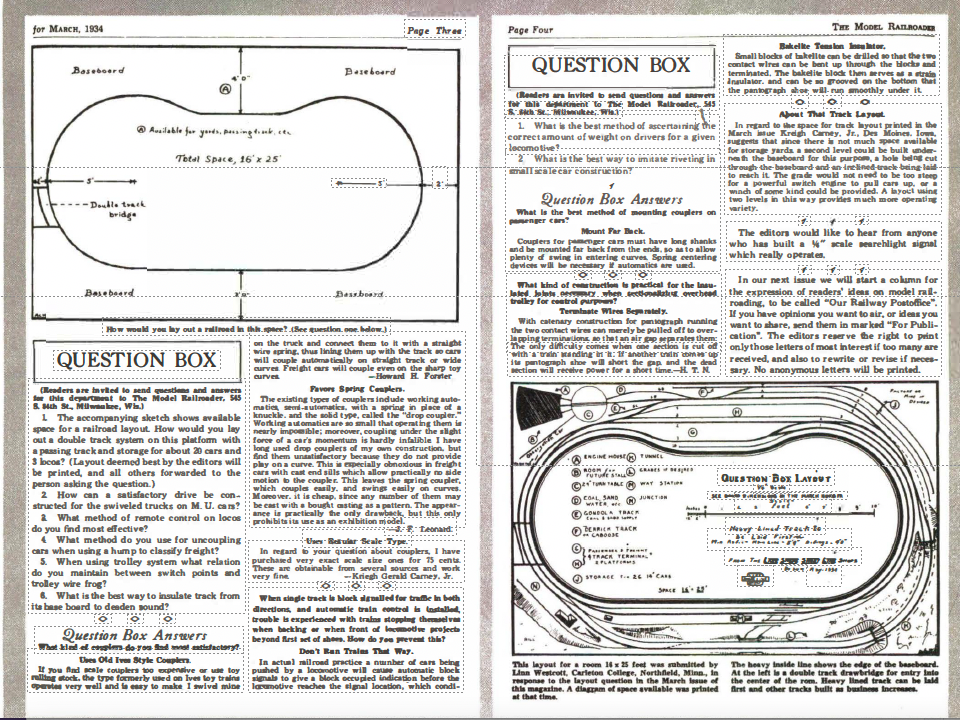
Larson: What type of work did you do for Al in those early days?
Westcott: I was primarily a draftsman. I set up a booth in what had been a doorless closet in the garage he was working out of then. I set up a drawing table and found a stool somewhere and started making the drawings for the magazine.
Larson: Let’s skip ahead to 1961. Were any special problems you had to deal with when you first became editor?
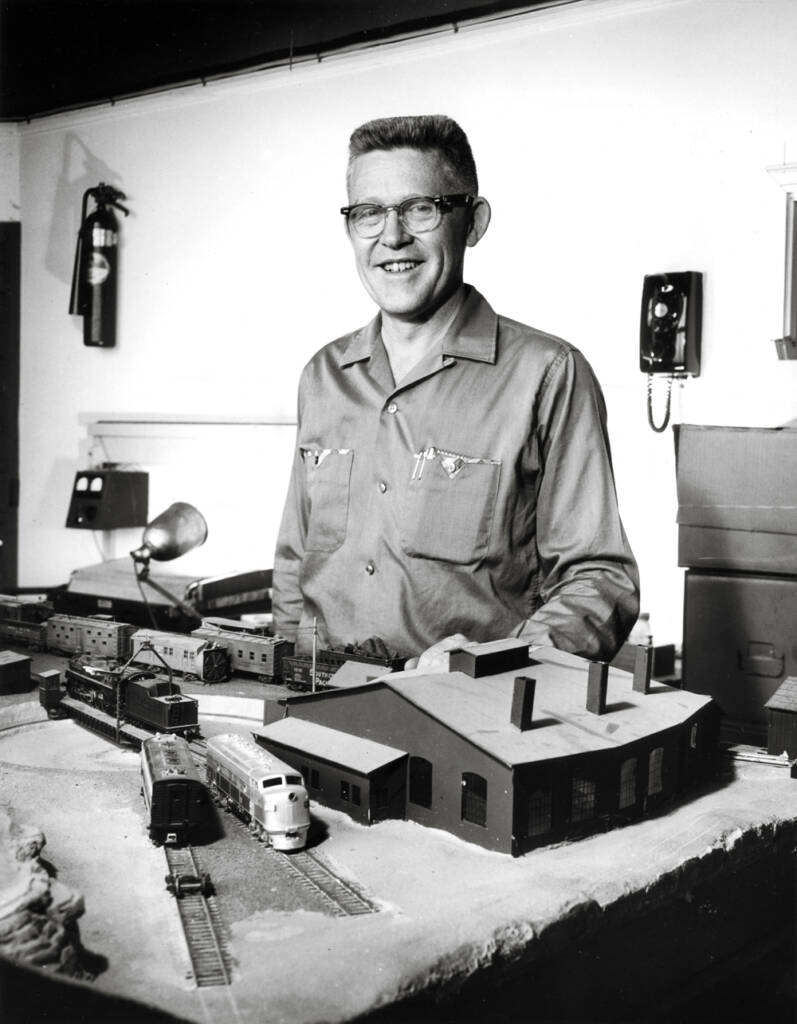
Westcott: I thought we were receiving too many critical letters. That indicated to me that the magazine’s content was not being well received. I started reading every letter we received.
Larson: It seems to me that when you were doing this initial planning, you were more concerned with the long-term good of the hobby. Is that correct?
Westcott: Yes; definitely so. I think Al Kalmbach had that idea also. We felt that our job was to build the hobby and if we did our job well the readers would come. As a matter of fact, some people have said that we built the hobby for the industry and our competitors as well.
Larson: What did you like most about being an editor?
Westcott: Creating a nice, finished article and then a whole magazine from the rough material that came in.
Larson: Is there any one issue of MR or any one article that you wrote that you consider your best?
Westcott: I think the article I did about Count Giansanti-Coluzzi [November 1976 MR] was one of my best. I think it was the best article I’ve done about a person.
One of my best articles about modeling concepts was “If I had a million” [May 1951 MR]. That was an important article. Many of the ideas I put forth in the article are now generally accepted.
Read the rest of the interview with Linn Westcott
Read the entire interview with Linn Westcott in the October 1977 issue of Model Railroader.






